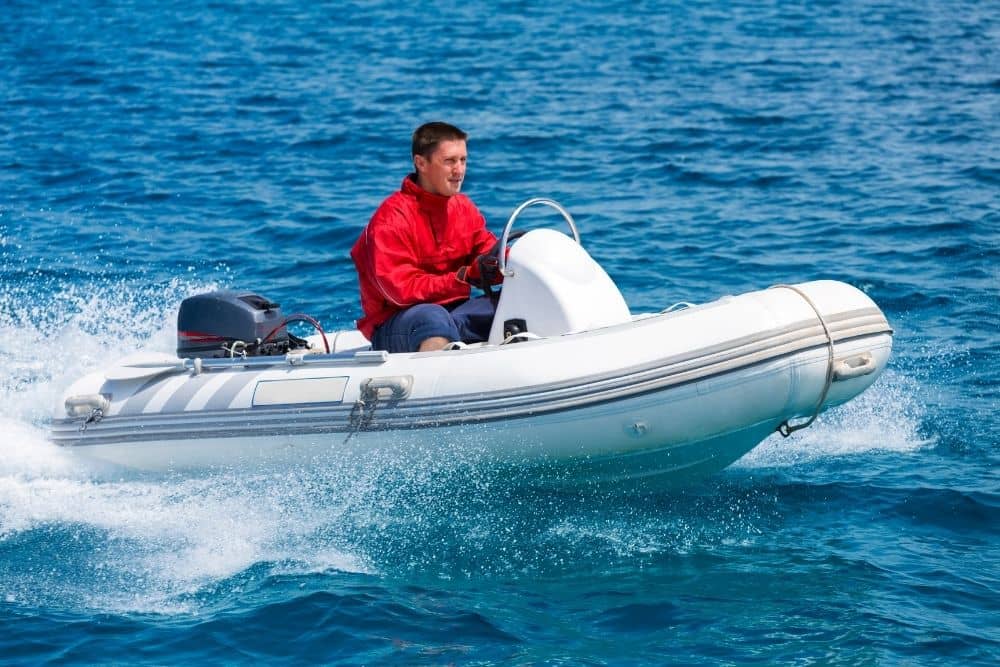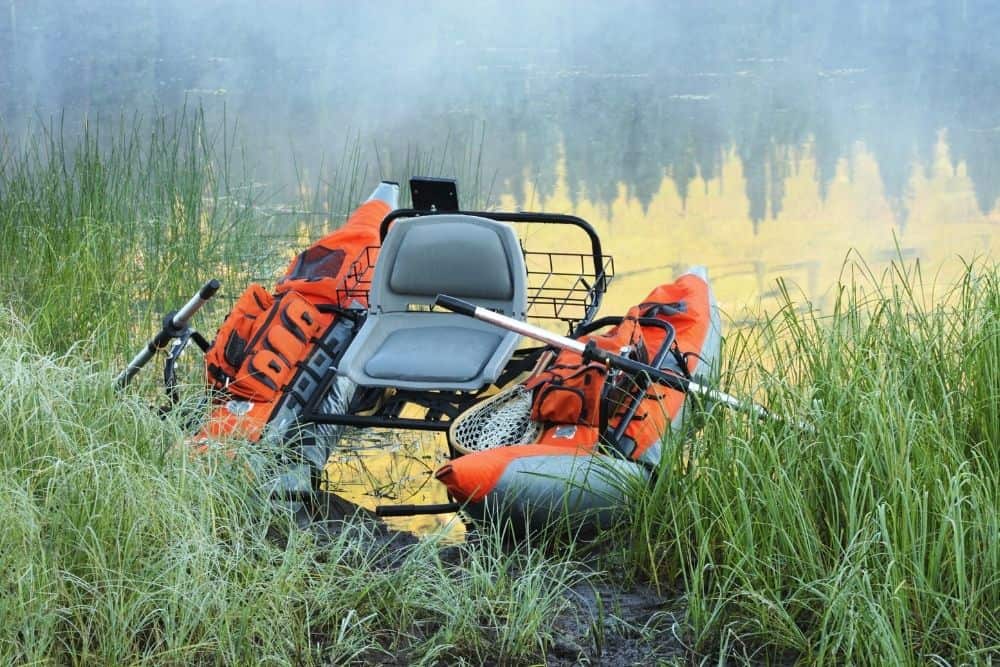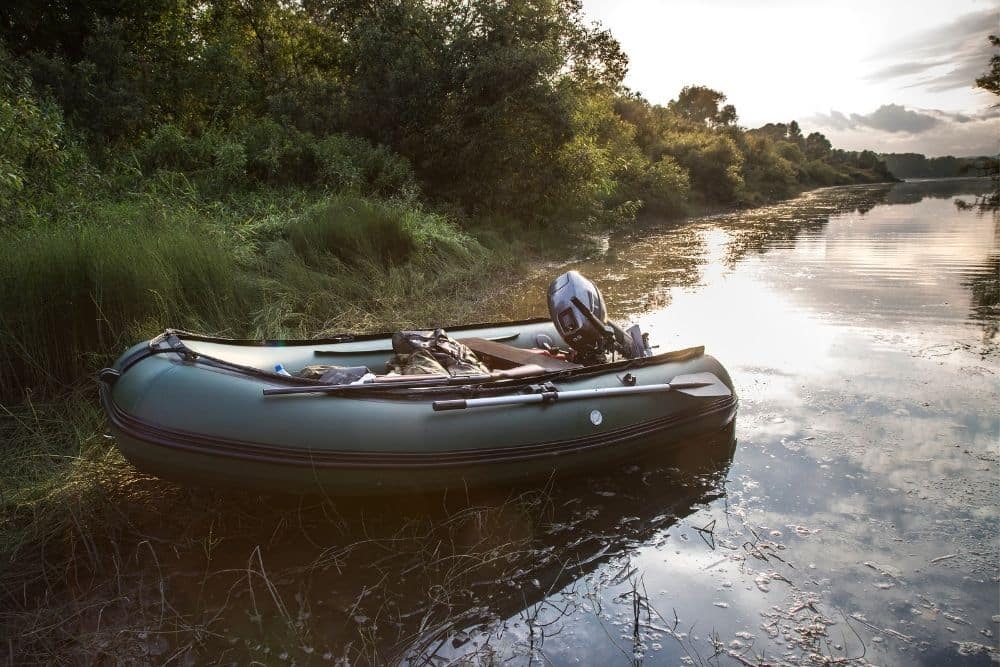If you’ve got an inflatable boat, you’ve probably operated it in deep water before. Maybe you’ve taken it out on the lake or even just offshore in the ocean.
You’ve tested it in deep water, but have you ever wondered about shallow water?
How shallow can the water be to safely operate an inflatable boat?
Of course, the answer will depend on the kind of inflatable boat you have. Some are made for larger, deeper bodies of water, while others are basically oversized pool floats best suited for the shallows.
So how deep should the water be for each type of inflatable boat?
What problems could you run into if the water is too shallow?
And what should you do if you find yourself stuck in a shallow area with a damaged boat?
Keep reading!
Today, we’ll take a closer look at each of these questions.
Table of Contents
How Deep Should the Water be for a Boat?
The minimum depth you need for a boat is called draft, or draught. Obviously, the draft is going to vary widely depending on the type of boat you’re in. Some boats need at least 8 feet of draft, while others need only a few inches.
When it comes to inflatable boats, you generally don’t need a lot of draft. This is because their buoyancy allows them to sit pretty close to the surface of the water.
With inflatable boats, the amount of weight you’re hauling–passengers and gear–can influence the boat’s draft. But again, this will be dependent on the type of inflatable boat you have.
On that note, let’s discuss the different types of inflatable boats and the average depths each one will need.
Rigid Inflatable Boat

Rigid inflatable boats are the ones most often used for fishing and boating. They have a hard floor that’s usually composed of marine plywood or aluminum, and they often have a shallow rigid keel.
In general, rigid inflatable boats are the heaviest type of inflatable boat. They are also more likely to be loaded down with a lot of added gear, extra passengers, and equipment such as trolling motors and fish finders.
Depending on the size, style, and how much weight they’re hauling, rigid inflatable boats generally need a few inches to 1 foot of draft.
They usually sit high up in the water and are not greatly affected by a person climbing into them, unless they’re already loaded down too close to their weight limit.
Of course, if you have a trolling motor or other underwater equipment, you’ll need significantly deeper water.
That said, it’s important to determine the specific draft of your specific boat before hitting the water. Your owner’s manual should give you the exact water depth minimum that your boat can safely handle.
Air Floor Inflatable Boat

Air floor inflatable boats are generally lighter weight than rigid inflatables, and they are often used for casual and recreational boating. Some are quite small, best used by children in swimming pools and at lake beaches; others are large enough to hold several adults.
The draft of air floor inflatables is greatly affected by the amount of weight they’re hauling, as well as how evenly that weight is distributed around the boat. The inflatable floors can be easily damaged if scraped across sharp rocks.
This type of boat will likely need 1 to 2 feet of draft. You can probably get away with less, but you don’t want to risk damaging your bottom.
A full boatload of gear or passengers will cause air floor inflatables to sit lower in the water, and even an empty boat may dip down when you first climb into it. Having a trolling motor will also affect the necessary water depth.
Again, knowing the specific draft for your boat is essential to avoiding areas that are two shallow. Always check your owner’s manual for the required draft before taking your boat out on the water.
Inflatable Kayak or Pontoon
These types of inflatable boats are often made for just one or two passengers and a load of gear.
Most inflatable kayaks are technically air floor inflatables, but they may have rigid keels and fin skegs to help stabilize the boat. For this reason, they may have a slightly larger draft.

Kayaks are much more streamlined than regular inflatable boats and usually have a lower maximum weight. Still, as long as they are not overloaded, they are quite buoyant and will float pretty close to the water’s surface.
That said, especially if skegs are in place, inflatable kayak drafts may be as much as 3 feet or more. Again, you may be able to get away with less. If no skegs are in place, the draft is significantly less, perhaps under 1 foot depending on the water conditions.
Remember, you don’t want to damage the air floor bottom, or you may find yourself taking on water.
Pontoon boats are exceptionally buoyant as long as it is loaded well below the maximum weight and the weight is evenly distributed. These types of boats will probably need only a few inches to a foot of draft (unless, of course, a trolling motor is being used).

It can’t be overstated enough: check your owner’s manual to find out your specific draft. The numbers given in this article are generalized ranges, but each boat is going to be different.
What Happens if the Water is Too Shallow?

Finding the proper water depth for your boat is extremely important. With larger, non-inflatable boats, you could easily find yourself beached on a sandbar or taking on water from a hole ripped in your hull.
With inflatable boats, you probably won’t become beached too easily, especially if you have a pair of paddles on board with you. Inflatable boats are lightweight enough and relatively easy to push off from a sandbar.
That said, if you’re using a trolling motor or other equipment, this equipment may be damaged if the water becomes too shallow. You should always have an extra foot or two of water below the bottom of any underwater equipment, which may add several feet to your boat’s usual draft.
It’s also easy to damage the bottom of your boat if you run aground on sharp rocks or glass. Such obstacles may rip holes in the boat bottom, especially with air floor inflatables, causing you to take on water and potentially capsize.
It’s always a good idea to keep a repair kit with you whenever you go out in an inflatable boat. Even if you do your best to avoid sharp rocks and too-shallow areas, you never know when an accident may happen and your repair kit will come in handy.
- PVC Stitch is a perfect durable heavy duty Air Mattress Patch Kit, patch for Above Ground Pools, Hot Tub Repair Kit, Pool Liner Repair kit, Air Track Patch Kit, PVC Glue, PU Glue, Inflatable Glue
- How to Use: This is liquid PVC that will become a permanent patch when it dries out. No other patches are needed. No need for mesh cord on pinholes, small rips/tears, or seams. 1. Deflate your...
Last update on 2025-07-02 at 06:46 / Affiliate links / Images from Amazon Product Advertising API
Conclusion
Most inflatable boats can go out in very shallow water, anywhere from a few inches to a few feet. You will need much deeper water than that if you’re using a trolling motor or other underwater equipment.
Always find out the appropriate water depth for your specific boat by checking your owner’s manual for the boat’s required draft.

Sarah Hood has been writing for Anchor Travel since 2021. When she’s not writing, she enjoys cooking, singing, and spending time in the great outdoors.


